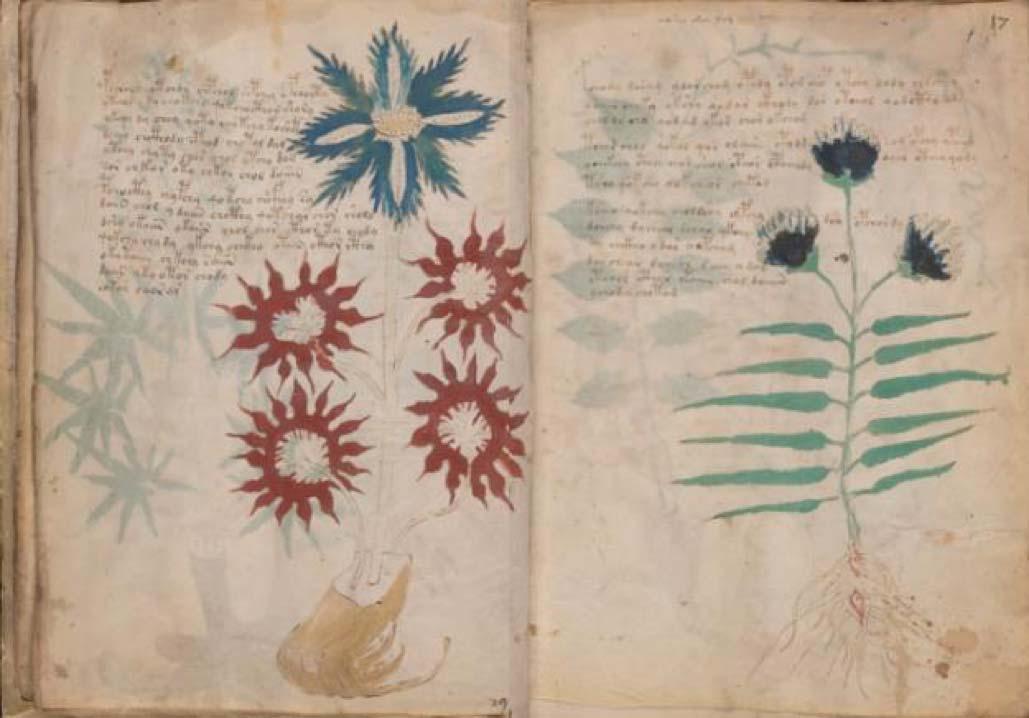
Greece Photo Courtesy : ancient-origins
In 1912 a Polish book dealer was invited to the Italian Villa Mondragone during an expedition to find rare manuscripts for his antiquarian bookshop in London. He had become a familiar face in Italy from his many trips there to purchase old and interesting books, so when the Jesuits of this patrician villa just south of Rome needed to sell their holdings for funds, they knew exactly who to go to. The man in mind had an interesting past; after an unsuccessful attempt to free two conspirators from a Warsaw prison in 1886 he had been arrested and sent to Siberia, which he escaped after only three years and eventually settled down in England. However, it turned out that what Wilfrid Voynich was to be remembered for would be purchased by him on this very trip – an illustrated codex that would puzzle experts all over the world, from scientists in Arizona to cryptographers of the First and Second World War: the Voynich manuscript.
At a first glance, one could be forgiven for thinking this codex to be simply another old book to add to the collection –it is smaller than an A4 sheet of paper, and the front cover is plain beige – but it didn’t take Voynich long to realise that what he had in front of him was particularly unique. The pages are richly illustrated with fascinating drawings of plants that no one can identify, creatures that no one has seen before and astronomical diagrams. However, it is the mysterious language written on the parchment that has attracted so much attention from Voynich and many others before and after him. Attached to the book was a letter, dated back to either 1665 or 1666, addressed to Athanasius Kircher, a Jesuit scholar known at the time for his Coptic dictionary and claim to have deciphered the Egyptian hieroglyphs. The man who sent it was the rector of Charles University, Jan Marek Marci, who was a close friend of Kircher’s and was certain that if anyone could decode the manuscript it would be him. This letter helped uncover the earliest confirmed mention of the book, which was written by a 17th-century alchemist named Georg Baresch. According to Baresch, the manuscript had been “taking up space uselessly”, and in his own letter, Marci declares that the alchemist “devoted unflagging toil” in his library for many years, and so he sent a sample copy to Kircher in the hope that he would be able to find clues on deciphering this “Sphynx”, which turned out to be a task the scholar never managed to successfully complete, even when the original copy was sent to him after Baresch’s death.
However, when Wilfrid Voynich presented the codex to the public in 1915, scholars everywhere began working to try and achieve what Kircher could not. Over the next century tests and trials would be put into practice in attempts to learn more about the codicology and language of the book. In 2009 the University of Arizona used radiocarbon dating, a technique that looks at the amount of the carbon-14 isotope in a sample, to discover that the book was made in the 15th century, between 1404 and 1438. Studies using polarized light microscopy determined that quill pens and iron gall ink were used for the text and drawings, and in 2014 it was revealed through protein testing that its pages were made of calfskin. Yet when it came to the language itself, uncovering its mysteries proved to be a considerably more laborious task – even the most famous wartime cryptologists such as Alan Turing could not decode what was written, and the US Army’s chief cryptoanalyst, William Friedmen, dedicated 30 years of his life to deciphering the symbols but to no avail.
One of the greatest mysteries of the Voynich manuscript is that of where it came from, although there are many theories – some more believable than others. According to Marci’s letter, the manuscript may have been created by the 13th-century philosopher Roger Bacon and was later bought by Rudolph II of Bohemia in 1586, based on the fact that a collector of Bacon’s work visited the monarch’s court around that time. However, there is no conclusive evidence, and many suggestions have been put forward since. Some suspicious researchers implemented the idea that the manuscript had been fabricated by Voynich himself, based on the fact that he would have known from his career how to deceive experts, and that he knew how much it would be worth, but this was disproved with the discovery of Baresch’s letter to Kircher. The desperation of finding an answer to the book’s origin have resulted in the occasional theory that is less convincing, including one that it was written by a covert of Italian witches, as well as the suggestion that it is the illustrated diary of an alien who left it behind on Earth whilst travelling. The wide range of hypotheses highlights just how much about the book is truly unknown. The creativity sparked by this enigma has also reached many creators; it was used as inspiration or a literary device for novels such as Mircea Cartarescu’s Solenoid, as well as pieces of music, including Hanspeter Kyburz’s 1995 chamber work The Voynich Cipher Manuscript, for chorus & ensemble.
In essence, the Voynich manuscript has become one of history’s greatest mysteries on this planet. Whilst the mission to reveal the secrets of the codex has sparked an interest that united people of a vast range of different mindsets and nationalities, the fact that so little is known has enriched so many cultures with its influence on authors, artists and composers. Therefore, perhaps this little book will benefit the world more if it continues to remain a mystery.
Bibliography
Spencer, M. (2020, May). The Voynich Manuscript: who wrote the mystery medieval codex and what is it trying to tell us?
Speel, J. (2010, January 20). Wilfrid Voynich
Wikipedia. The Voynich Manuscript
Wikipedia. Wilfrid Voynich
Crystalinks. The Voynich Manuscript
By Claire Kennedy


